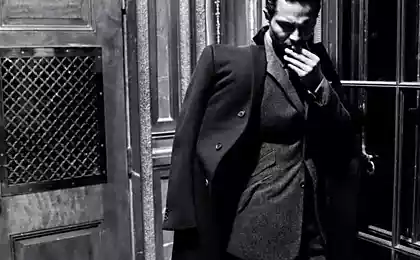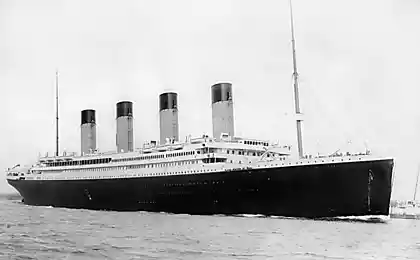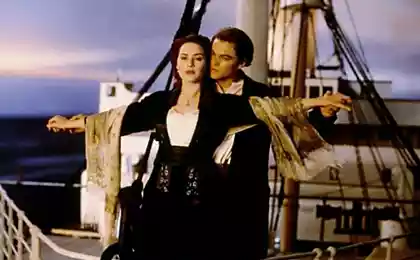595
Men on the Titanic
Several of the men who died in the "Titanic»:
Lieutenant Colonel John Jacob Astor IV - American millionaire businessman, writer, member of the Spanish-American War. In 1894 he wrote the novel "Journey to other worlds", which describes the journey to Saturn and Jupiter in 2088. Astor was the richest passenger on board the "Titanic».
Planted in a boat with his wife and a nurse maid. He asked permission to sit with them. He was denied. He did not insist.

Major Archibald Willingham Butt - chief military assistant to US presidents Roosevelt and Taft. Helps women and children take their places in the boats.
Benjamin Guggenheim - a millionaire. Planted in the boat his beloved and her maid. Realizing that the situation is much more serious, and he could not escape, Guggenheim returned from valet to the cabin, where dressed in tuxedos. Along with him, he sat down at a table in the main hall, where the leisurely sipping whiskey, watching the disaster. When someone suggested that they try to escape, Guggenheim said, "We are dressed in accordance with our position and we are ready to die like gentlemen».
Lieutenant William McMaster Murdoch - was the officer in charge on the bridge at night collision "Titanic" with an iceberg. After the collision Murdoch led the evacuation of the passengers on the starboard side, during which he launched the 10 lifeboats, thereby escaped 75% of all survivors in the crash.
Francis Davis Millet - American painter and sculptor. He was last seen helping to put women and children into the boats.
Juozas Montvila - Lithuanian Catholic priest. According to surviving witnesses, he did not use the opportunity to take a seat in a lifeboat, and instead consoled people listened to those who wish to confess.
James Paul Moody - six officers liner "Titanic." Helped pull the boat number 12, 14 and 16. When loading the boat 14, a fifth officer Harold Lowe wanted to her sat a junior officer, but Moody gave him a place.
William Thomas Stead - the British journalist, publicist and public figure, Esperanto, promoted the principle of "Peace through arbitration," likely contender for the Nobel Peace Prize in 1912, as well as one of the pioneers of investigative journalism. After the collision with the iceberg of the ship, he helped to put women and children into the lifeboats. Then he went into the smoking room, where he was last seen in a chair reading a book.
George Dunton Widener - American businessman, a millionaire. After the collision, the ship put his wife and the maid into a lifeboat.
John George Phillips - eldest of the radio operators of "Titanic" and the first in the history of the operator who has submitted the international SOS signal for rescue Until the last minute did not leave the radio room, passing signals for help.
Wallace Henry Hartley - British violinist and orchestra director of "Titanic". After the collision, the Titanic with the iceberg, Hartley and his orchestra began to play music to keep calm passengers during boarding the boat. Many of the survivors were told that the orchestra continued to play until the end. None of the members of the orchestra have survived.
Isidor Straus - German-American businessman, co-owner of the largest US department store chain «Macy's». Member of the US House of Representatives. After the crash, one of the officers offered to Isidore and his wife Ida, the two of us to sit in the boat, but Isidor refused, determined to share the fate of other men sinking ship. He tried to sit in the boat I go, but she refused to leave her husband. Instead, Strauss himself put her maid into the boat.
Thomas Andrews Jr. - Irish businessman and shipbuilder, the designer of "Titanic." During the evacuation of passengers perching helped into the boats. He was last seen in the smoking room next to the fireplace, where he looked at the picture of the "Port of Plymouth." It was assumed that the "Titanic" to visit it on the way back. According to other testimony, Thomas Andrews was last seen when he was throwing chairs into the water with the promenade deck to passengers who find themselves in the water, can use them as life rafts.
Lieutenant Colonel John Jacob Astor IV - American millionaire businessman, writer, member of the Spanish-American War. In 1894 he wrote the novel "Journey to other worlds", which describes the journey to Saturn and Jupiter in 2088. Astor was the richest passenger on board the "Titanic».
Planted in a boat with his wife and a nurse maid. He asked permission to sit with them. He was denied. He did not insist.

Major Archibald Willingham Butt - chief military assistant to US presidents Roosevelt and Taft. Helps women and children take their places in the boats.
Benjamin Guggenheim - a millionaire. Planted in the boat his beloved and her maid. Realizing that the situation is much more serious, and he could not escape, Guggenheim returned from valet to the cabin, where dressed in tuxedos. Along with him, he sat down at a table in the main hall, where the leisurely sipping whiskey, watching the disaster. When someone suggested that they try to escape, Guggenheim said, "We are dressed in accordance with our position and we are ready to die like gentlemen».
Lieutenant William McMaster Murdoch - was the officer in charge on the bridge at night collision "Titanic" with an iceberg. After the collision Murdoch led the evacuation of the passengers on the starboard side, during which he launched the 10 lifeboats, thereby escaped 75% of all survivors in the crash.
Francis Davis Millet - American painter and sculptor. He was last seen helping to put women and children into the boats.
Juozas Montvila - Lithuanian Catholic priest. According to surviving witnesses, he did not use the opportunity to take a seat in a lifeboat, and instead consoled people listened to those who wish to confess.
James Paul Moody - six officers liner "Titanic." Helped pull the boat number 12, 14 and 16. When loading the boat 14, a fifth officer Harold Lowe wanted to her sat a junior officer, but Moody gave him a place.
William Thomas Stead - the British journalist, publicist and public figure, Esperanto, promoted the principle of "Peace through arbitration," likely contender for the Nobel Peace Prize in 1912, as well as one of the pioneers of investigative journalism. After the collision with the iceberg of the ship, he helped to put women and children into the lifeboats. Then he went into the smoking room, where he was last seen in a chair reading a book.
George Dunton Widener - American businessman, a millionaire. After the collision, the ship put his wife and the maid into a lifeboat.
John George Phillips - eldest of the radio operators of "Titanic" and the first in the history of the operator who has submitted the international SOS signal for rescue Until the last minute did not leave the radio room, passing signals for help.
Wallace Henry Hartley - British violinist and orchestra director of "Titanic". After the collision, the Titanic with the iceberg, Hartley and his orchestra began to play music to keep calm passengers during boarding the boat. Many of the survivors were told that the orchestra continued to play until the end. None of the members of the orchestra have survived.
Isidor Straus - German-American businessman, co-owner of the largest US department store chain «Macy's». Member of the US House of Representatives. After the crash, one of the officers offered to Isidore and his wife Ida, the two of us to sit in the boat, but Isidor refused, determined to share the fate of other men sinking ship. He tried to sit in the boat I go, but she refused to leave her husband. Instead, Strauss himself put her maid into the boat.
Thomas Andrews Jr. - Irish businessman and shipbuilder, the designer of "Titanic." During the evacuation of passengers perching helped into the boats. He was last seen in the smoking room next to the fireplace, where he looked at the picture of the "Port of Plymouth." It was assumed that the "Titanic" to visit it on the way back. According to other testimony, Thomas Andrews was last seen when he was throwing chairs into the water with the promenade deck to passengers who find themselves in the water, can use them as life rafts.























